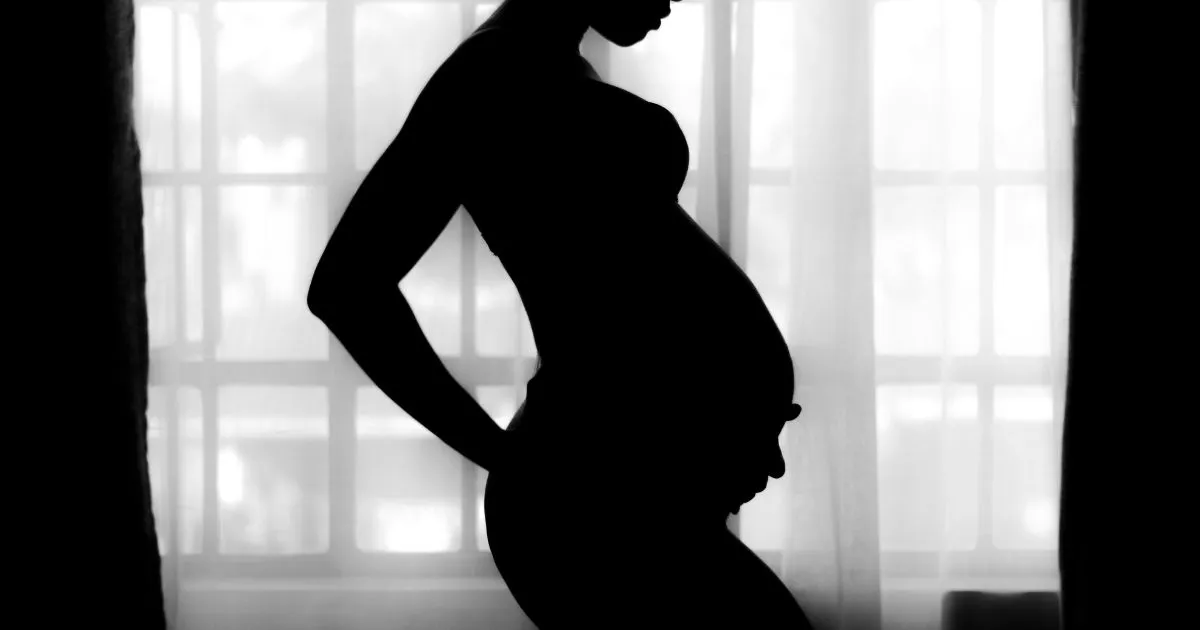Pregnancy is a time of incredible change—your body transforms in ways you never imagined, and many new experiences come with it. While most of these changes are anticipated, some come as a surprise. If you’ve been experiencing pain around your tailbone, you’re not alone. Many women wonder, Why does my tailbone hurt during pregnancy? The good news is, while it can be uncomfortable, this pain is usually a common part of the journey. However, understanding what causes tailbone pain, how to manage it, and when to seek medical help can make all the difference.
In this article, we’ll dive deep into why your tailbone hurts during pregnancy, providing insight into the causes, tips for relief, and when you should reach out to your healthcare provider. Let’s break it down together.
Table of Contents
What is Coccydynia and Why Does It Happen?
Coccydynia is the term used to describe pain in the tailbone area, or the coccyx, and it’s something many pregnant women experience. The coccyx is located at the very bottom of your spine, and while you may not typically notice it, pregnancy changes your body in ways that can put a strain on this area.
During pregnancy, your body undergoes numerous changes, and your hormones play a key role in this process. One of the most significant hormones at play is relaxin. Relaxin loosens ligaments and joints in preparation for childbirth, which is essential for your baby’s passage through the birth canal. However, this also means that the ligaments and joints around your tailbone become looser and more vulnerable to strain, making them more prone to pain.
In addition, as your pregnancy progresses, your center of gravity shifts due to the growing uterus, which can affect your posture and alignment. All of this combined can lead to discomfort or even pain in the tailbone area.
Common Causes of Tailbone Pain in Pregnancy
Understanding the root cause of your tailbone pain is the first step in finding effective relief. Let’s explore some of the most common reasons you may be feeling discomfort in your coccyx during pregnancy.
Postural Changes and the Growing Belly
One of the main reasons for tailbone pain during pregnancy is postural changes. As your baby grows, your body naturally shifts to accommodate the added weight. The growing belly throws your center of gravity off, which means you may unconsciously alter the way you stand, sit, or walk. These changes can put extra pressure on your coccyx, leading to pain.
Additionally, poor posture can exacerbate this issue. Many pregnant women find themselves slouching or leaning backward to compensate for the added weight in front. Sitting for long periods, especially on hard surfaces, can worsen tailbone pain and discomfort.
Weight Gain and Increased Pressure on the Pelvic Region
As your pregnancy progresses, you naturally gain weight to support your growing baby. While weight gain is healthy and necessary for pregnancy, it also means more pressure on your pelvic region and tailbone. The added weight can place additional strain on your back, hips, and tailbone, resulting in pain.
A significant shift in how you carry weight can be uncomfortable. For example, the forward weight shift that occurs as your belly grows puts a greater load on your back and pelvis. If your body isn’t fully adjusted to these changes, your tailbone can bear the brunt of the added pressure.
The Position of the Baby and Its Effect on the Tailbone
During the third trimester, your baby’s position can also influence the amount of pressure you feel on your tailbone. If the baby is positioned low or presses on your pelvic bones, it can cause discomfort in the pelvic floor, which includes the tailbone.
Many women find that their pain intensifies as the baby grows and moves lower into the pelvis in preparation for labor. The baby’s positioning can directly affect the alignment of your pelvic region, contributing to coccyx pain.
How to Find Relief from Tailbone Pain During Pregnancy
Now that you know some of the causes behind tailbone pain, it’s time to talk about ways to ease the discomfort. Fortunately, there are several methods you can try to relieve the pressure on your tailbone and manage the pain.
Posture Adjustments and Ergonomic Tips
One of the most effective ways to manage tailbone pain is through postural adjustments. As your body changes, it’s crucial to maintain good posture to reduce the strain on your tailbone. Here’s how you can help:
- Sit with Support: Use a lumbar support pillow to keep your back straight while sitting. Avoid sitting for extended periods on hard surfaces.If you must sit for a while, opt for a cushioned seat or a tailbone cushion that alleviates pressure on your coccyx.
- Stand Tall: Good posture while standing can also prevent your tailbone from bearing too much pressure. Keep your shoulders back and your spine aligned to avoid slumping, which can exacerbate pain.
- Take Breaks: If you’re sitting for extended periods, make sure to stand and walk around to relieve the pressure on your tailbone.
Exercises to Strengthen Your Pelvic Floor and Back Muscles
Strengthening the muscles around your pelvic floor, back, and core can be an excellent way to support your body during pregnancy and alleviate tailbone pain. The stronger your muscles are, the less pressure will be placed on your tailbone.
Some effective exercises include:
- Pelvic tilts: These exercises strengthen the lower back and pelvic region, offering relief from pressure on your tailbone.
- Cat-Cow stretches: This yoga move helps with spinal flexibility and can alleviate tension around the lower back and tailbone area.
- Prenatal yoga: This form of exercise focuses on strengthening and stretching key muscle groups to support pregnancy and relieve discomfort.
Before beginning any exercise routine, it’s always best to consult your healthcare provider to ensure it’s safe for you and your baby.
Alternative Therapies and Pain Management
If you’re looking for alternative therapies to ease your tailbone pain, there are several options available:
- Heat or Cold Therapy: Apply a warm compress or cold pack to your lower back or tailbone for relief. Heat can help relax tight muscles, while cold packs can reduce inflammation and numb the area.
- Chiropractic Care: Many pregnant women find relief from chiropractic adjustments, which help align the spine and pelvis. Ensure you choose a chiropractor who specializes in pregnancy care.
- Acupuncture: This traditional Chinese medicine technique may help alleviate pain by targeting specific pressure points in the body.
When to See a Doctor
In most cases, tailbone pain is a normal part of pregnancy. However, there are situations where you should reach out to your healthcare provider:
- Severe Pain: If the pain becomes unbearable or prevents you from carrying out daily activities, it’s time to consult a doctor.
- Sudden Onset of Pain: If the pain comes on suddenly or worsens dramatically, it could indicate another issue, such as sciatica or pelvic misalignment, which requires medical attention.
- Pain with Other Symptoms: If you experience tailbone pain along with symptoms like fever, swelling, or difficulty moving, these could be signs of a more serious condition.
Can Tailbone Pain Be Prevented During Pregnancy?
While you can’t fully prevent the physical changes that come with pregnancy, there are several steps you can take to minimize tailbone pain and avoid unnecessary discomfort.
Early Intervention and Lifestyle Modifications
Taking action early can help prevent your tailbone pain from becoming a more significant issue. Simple lifestyle changes, such as:
- Maintaining a healthy weight throughout your pregnancy
- Practicing good posture and using ergonomic furniture
- Incorporating gentle exercises into your routine
All of these can help you avoid severe discomfort as your pregnancy progresses.
Creating a Comfortable Sleeping and Sitting Environment
You can make your daily activities more comfortable with a few adjustments:
- Use supportive pillows while sleeping to align your spine and prevent pressure on your tailbone.
- Choose the right chair: Opt for a comfortable, ergonomic chair when sitting. If you need extra support, try using a cushion or a special pregnancy pillow designed to ease tailbone pain.

FAQ: Everything You Need to Know About Tailbone Pain During Pregnancy
Why Does My Tailbone Hurt More in the Third Trimester?
In the third trimester, the baby’s growth and positioning, combined with the body’s changes in preparation for childbirth, can place more pressure on your tailbone. Additionally, your pelvis is loosening to accommodate the baby, which can lead to increased discomfort.
Is It Normal to Have Tailbone Pain During Pregnancy?
Yes, tailbone pain is common during pregnancy. It’s typically caused by changes in posture, weight distribution, and the loosening of ligaments.
Can I Exercise with Tailbone Pain?
Yes, many exercises can help strengthen your back and pelvic floor muscles, reducing tailbone pain. However, always check with your healthcare provider before starting any exercise routine during pregnancy.
How Can I Sleep Comfortably with Tailbone Pain?
Sleep on your side, placing a pillow between your knees to provide extra support.can also place a cushion under your tailbone while sleeping to reduce pressure.
When Should I Call My Doctor About Tailbone Pain?
If your pain is severe, persistent, or comes with other symptoms like swelling or fever, you should consult your healthcare provider for further evaluation.
